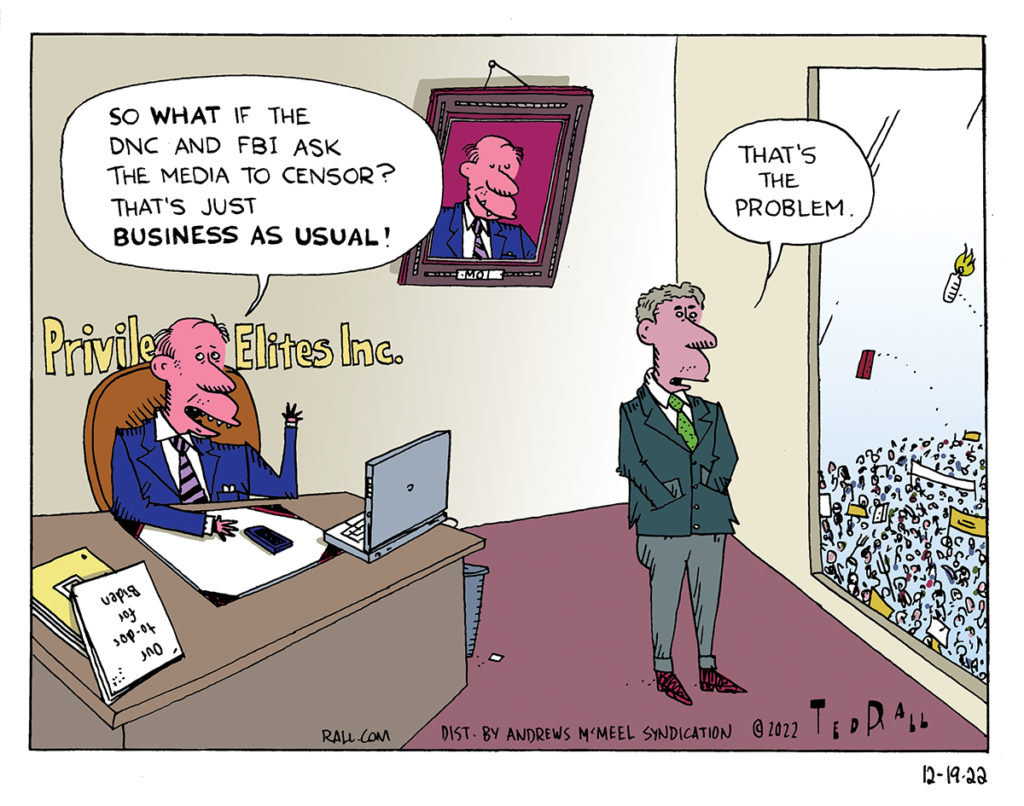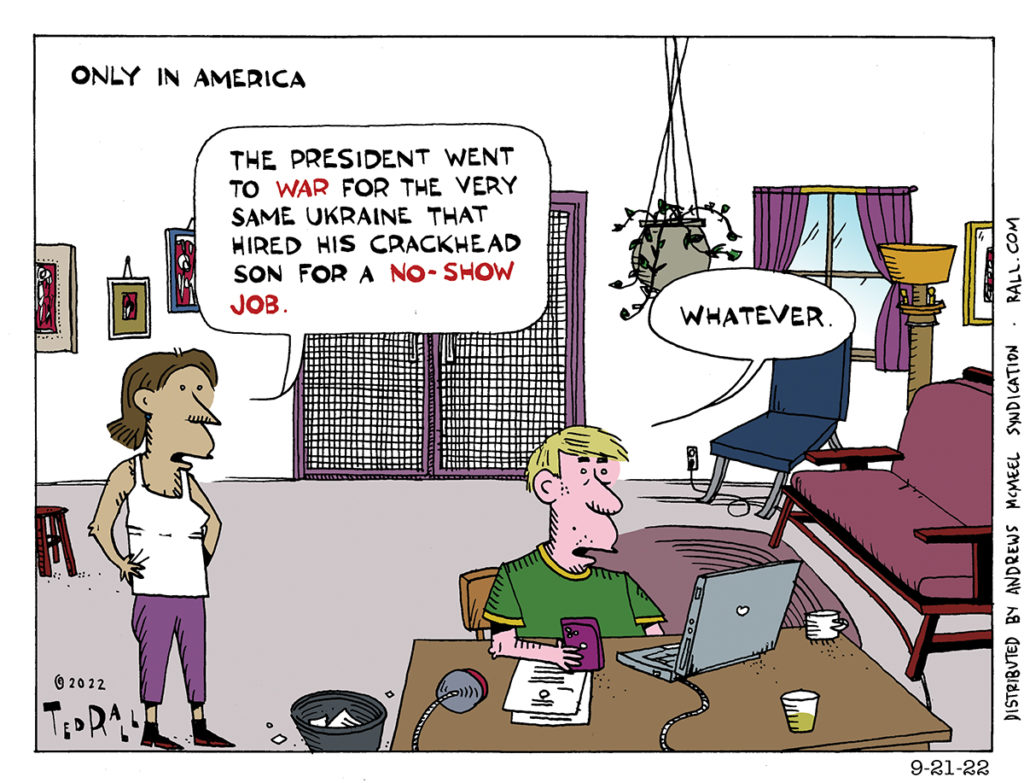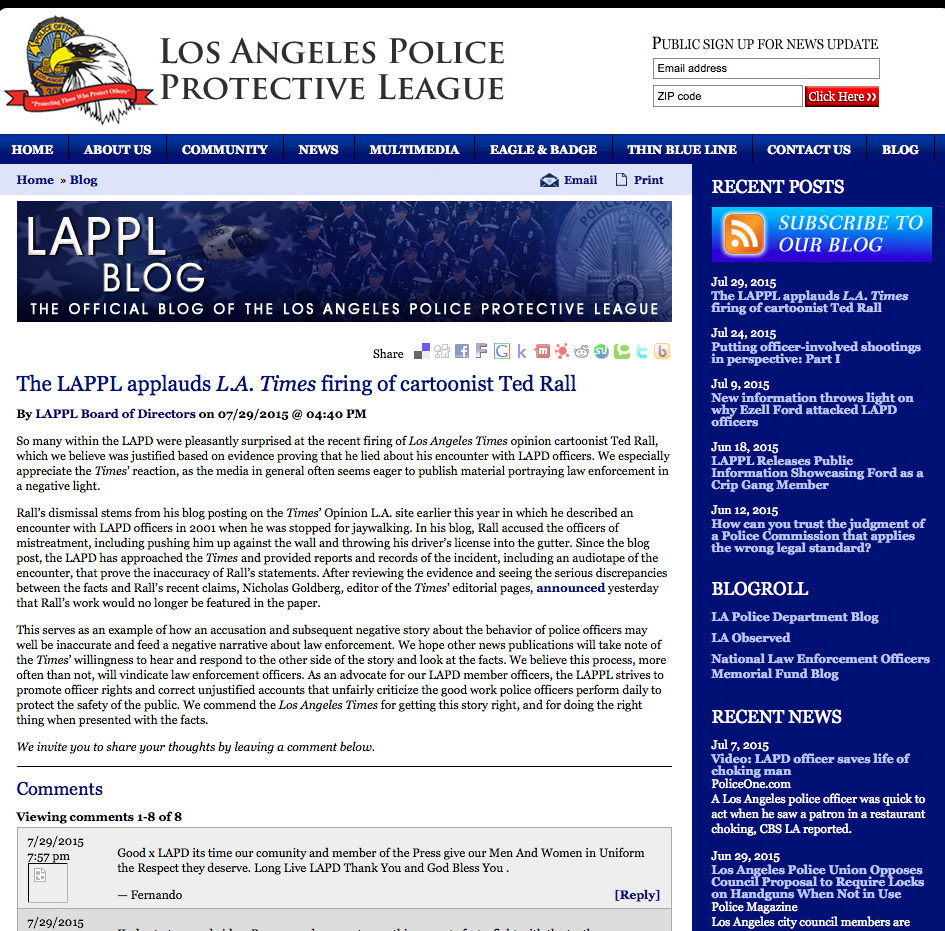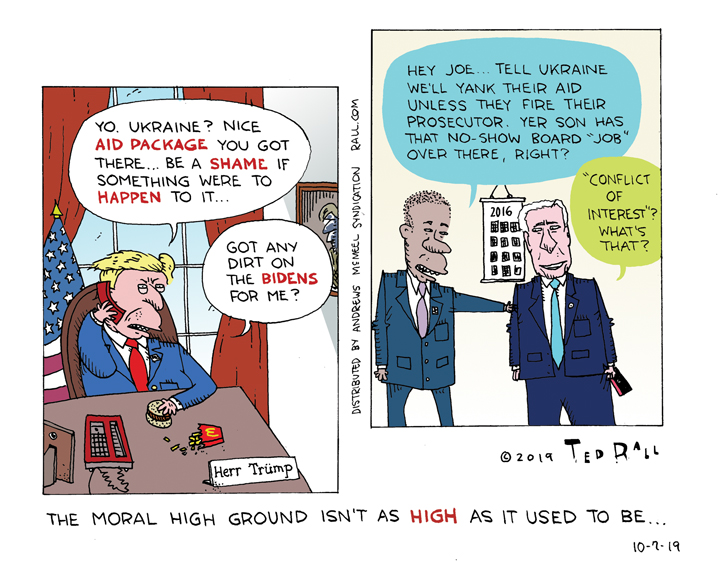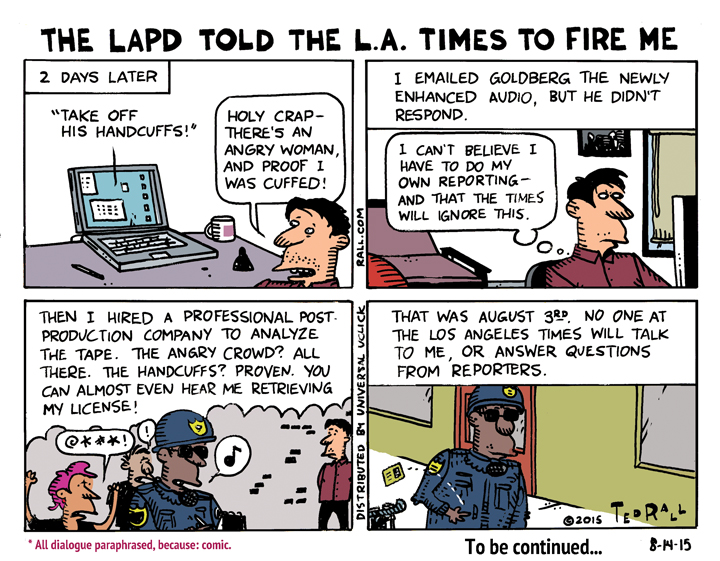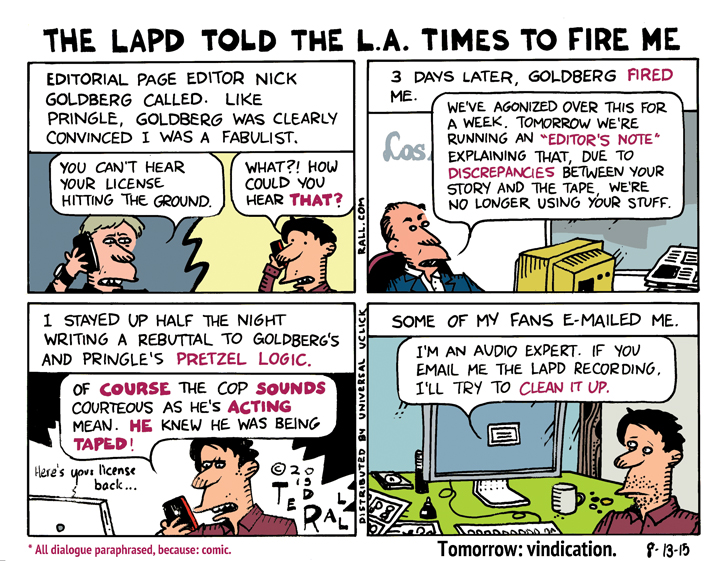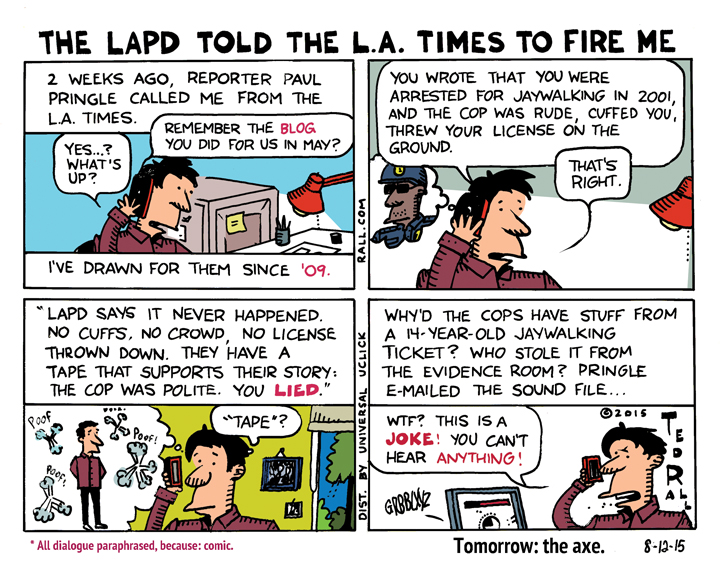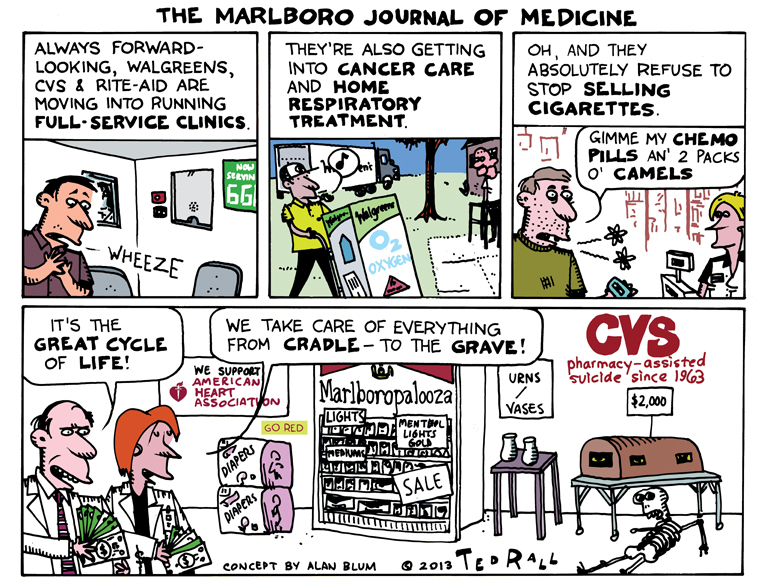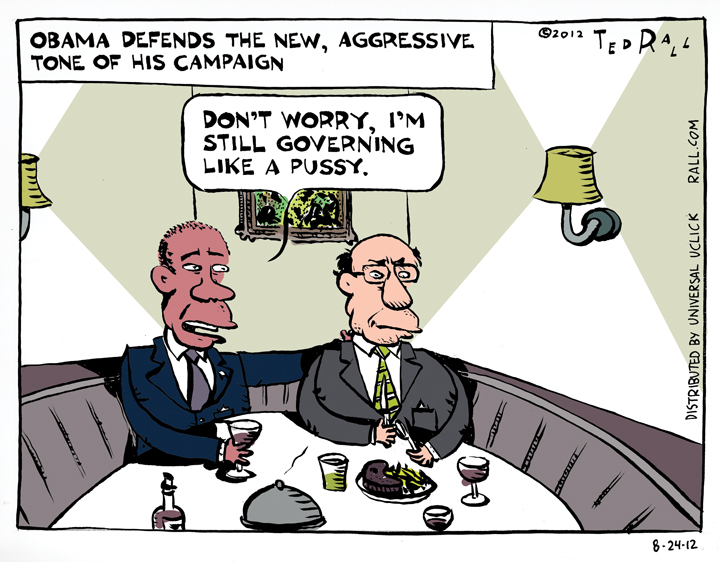The Democratic National Committee and the FBI asked Twitter to censor the Hunter Biden story and deplatform Donald Trump. Establishment pundits point out that such contacts are business as usual. But ordinary readers, who are just finding about it, are not pleased.
Only in America
Supporters of Ukraine in its conflict with Russia seem unable to understand the terrible optics of the fact that President Biden, who has essentially entered the war on the side of Ukraine, has a drug addict son who received a lucrative no-show job from Ukraine. There is no distinction between the appearance of conflict of interest and actual conflict of interest.
An Open Letter to Los Angeles Times Executive Editor Norman Pearlstine
On June 5th you issued a statement acknowledging the role your newspaper has played in the racist oppression of people of color. “The Los Angeles Times has a long, well-documented history of fueling the racism and cruelty that accompanied our city’s becoming a metropolis,” you wrote. You promised reforms, including “addressing the concerns of people of color in the newsroom.”
You admitted that this is merely a start and asked for suggestions for how the Times can redeem itself and earn the trust of readers, especially people of color.
I will take you at your word.
To begin with, the Times should come clean about its longstanding, cozy relationship with the LAPD. And it should end this deep conflict of interest, which makes it impossible for your paper to report objectively about the police. When the media fails to hold the police accountable they are free to abuse the citizens they are supposed to protect.
My case shines a light on how the media censors critics and breeds self-censorship by journalists. I was the Times’ editorial cartoonist from 2009 to 2015. My cartoons often criticized police brutality and racist policing. Instead of stopping their abuse of minorities, however, the police repeatedly demanded that the papers that ran my cartoons fire me. Those requests fell on deaf ears until 2014, when the Times brought in a new publisher, Austin Beutner. Beutner, a hedge fund billionaire who is now superintendent of LA schools, midwifed a deal by which the $16.4 billion LAPD pension fund purchased #1 shareholder status in Tribune Publishing, which owned the Times and 14 other newspapers. (Yes, it’s legal for the cops to buy media companies.) Sealing the deal and in violation of the Times’ ethical guidelines, the LAPD police union gave an award to Beutner.
The LAPD police union has a history of buying newspaper stock. They don’t hide their motives. They seek to remove negative coverage of the police from “their” papers. “Since the very public employees they continually criticize are now their owners, we strongly believe that those who currently run the editorial pages should be replaced,” the union’s president explained in 2009, after it acquired interest in the San Diego Union-Tribune.
Months after the LAPD-LA Times deal, then-LAPD police chief Charlie Beck arranged a secret meeting at Beutner’s office. Fire your cartoonist, Beck demanded. Beutner agreed.
But firing me was not enough for Beck. The LAPD also wanted to send a chilling message to journalists throughout the Southland: if you criticize the police, we will destroy you. So the Times published a smear job about me.
The Times’ article didn’t mention the meeting between Beck and Beutner. It didn’t talk about the LAPD pension fund’s ownership of the Times. To this day, those facts have never been revealed to Times readers. The piece relied upon faked evidence provided by Beck to characterize me as a liar (in a blog about jaywalking, of all things). I proved the evidence was bogus and that I had been truthful, yet editorial page editor Nick Goldberg—under orders from Beutner—ignored it.
Goldberg later admitted that the truth didn’t matter. The Times was determined to ruin me and didn’t care that I had done nothing wrong. Inexplicably, Goldberg still works at the Times.
My case is not just about me. It opens a window into why and how the Times’ relationship with the police corrupts its commentary and coverage.
It shows why and how victims of police brutality have been ignored or diminished.
It explains why and how police narratives are taken at face value, no matter how ridiculous. While I was being given the bum’s rush, reporter Paul Pringle, assigned to be the Times’ hatchet man, told me that he had verified that the bogus LAPD materials were authentic. How? I asked. “The LAPD told me,” he said. I laughed. He was serious, though. Pringle still works at the Times too. He recently won a Pulitzer Prize.
How can anyone read about what happened to me and still believe anything the Times has to say about cops?
Mr. Pearlstine, if this is not empty talk, if you are serious about turning over a new leaf, you should address my case. Hiring more people of color in the newsroom is overdue, important and necessary. But black reporters aren’t more likely than white journalists to go after the police if they’re equally afraid of getting fired. Everyone at the Times knows what the paper did to me; they know it can happen to them too if they go “too far” against the cops.
The LAPD got rid of their most irritating critic and a pundit who made going after police brutality a priority. The Times never replaced me.
The LAPD terrorized other journalists. They won.
Rehiring me would make a powerful symbolic statement that the Beutner era of corruption and complicity with the police is finished. It would demonstrate you do not edit a police propaganda rag. You could take down the two libel-filled articles about me that are still on your website. You could issue a retraction and an apology.
The LAPD has since divested itself of its Tribune stock. The Times’ current owner, Dr. Pat Soon-Shiong, should pledge not to enter into financial partnerships with law enforcement agencies.
Like many other papers, the Times relies on the police to tip off reporters about breaking local news. This relationship should be severed. Reporters ought not socialize with cops, much less rely upon them for stories. Refusing to be a police lapdog requires hiring more journalists—but Soon-Shiong is a biotech billionaire. He can easily afford them.
Thank you for taking the time to read this. I look forward to hearing from you.
Very truly yours,
Ted Rall
(Ted Rall (Twitter: @tedrall), the political cartoonist, columnist and graphic novelist, is the author of the biography “Bernie,” updated and expanded for 2020. You can support Ted’s hard-hitting political cartoons and columns and see his work first by sponsoring his work on Patreon.)
LA Times’ Billionaire Owner Buys a Hospital. Next Day, CA Supreme Court Tosses My Case.
Am I a victim of the COVID-19 pandemic? Legally, maybe.
Reversing direction unexpectedly, the California Supreme Court has decided NOT to hear my defamation and wrongful termination lawsuit against the Los Angeles Times, billionaire publisher Austin Beutner, and parent company Tribune Publishing, which at the time of my firing was owned in large part by the Los Angeles Police Department pension fund.
Adding to the confusion, the Court decertified the Court of Appeals ruling against me. This means that, while I will soon be ordered to pay close to $1 million to the LA Times for their legal bills defending themselves from lying about me in two articles, I can take comfort in the fact that Rall v. LA Times will not be used to screw over other journalists under California’s anti-SLAPP statute. My case cannot be used as a precedent. It’s sort of like Bush v. Gore.
You are welcome, California journalists. You are safe.
Why did the court make the decision they made? There’s no way to tell. They issued a pair of trite phrases: “Petition for review denied; CA opinion decertified.” After five years and thousands of pages of opinions and blood and sweat and tears, that’s all she wrote.
It is possible that, as a friend of mine speculated this evening, the court didn’t want to sanction a disruptive decision against a major newspaper at a time when dozens of newspapers are going out of business every day.
What is interesting is the timing.
A few weeks ago, the California Supreme Court signaled to my attorneys that it planned to kick my case down the road for at least several months due to the COVID-19 epidemic and the closure of California courts.
Then, yesterday, the current owner of the LA Times, biotech billionaire Dr. Pat Soon-Shiong, made headlines by announcing his intention to buy a closed Los Angeles hospital for the purpose of treating coronavirus patients. $135 million dollars buys a lot of good will at a time like this.
The very next day, my case went away. Coincidence? Perhaps. Perhaps not. Who knows?
My attorneys and I are exploring next steps. I will keep you posted.
The LAPD Told the LA Times to Fire Me (Part 3 of 3)
On July 27, 2015, the Los Angeles Times fired me as its long-time editorial cartoonist. The reason given was their belief, based on a secret LAPD audiotape of my 2001 arrest for jaywalking, that I lied about my treatment by the police officer in a May 11, 2015 blog for the Times. However, when I had the tape enhanced and cleaned up, it proved I’d told the truth. So why won’t the Times comment or admit they were wrong?
The LAPD Told the LA Times to Fire Me (Part 2 of 3)
On July 27, 2015, the Los Angeles Times fired me as its long-time editorial cartoonist. The reason given was their belief, based on a secret LAPD audiotape of my 2001 arrest for jaywalking, that I lied about my treatment by the police officer in a May 11, 2015 blog for the Times. However, when I had the tape enhanced and cleaned up, it proved I’d told the truth. So why won’t the Times comment or admit they were wrong?
The LAPD Told the LA Times to Fire Me (Part 1 of 3)
On July 27, 2015, the Los Angeles Times fired me as its long-time editorial cartoonist. The reason given was their belief, based on a secret LAPD audiotape of my 2001 arrest for jaywalking, that I lied about my treatment by the police officer in a May 11, 2015 blog for the Times. However, when I had the tape enhanced and cleaned up, it proved I’d told the truth. So why won’t the Times comment or admit they were wrong?
Cartoon: CVS Runs Scared, Stops Selling Cigs
Today CVS announced its plans to stop selling cigarettes and other tobacco products. Here is a freelance cartoon commissioned by an individual reader (yes! you can do that) that he had been shopping around to various media outlets without success for the last month.

